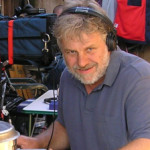Forums › Forums › Qu Forums › Qu general discussions › QU Drive – working with USB hard drive
Tagged: Qu-Drive
- This topic has 17 replies, 9 voices, and was last updated 8 years, 9 months ago by
airickess.
-
AuthorPosts
-
2016/02/08 at 4:32 pm #53795
miroslav
ParticipantHello,
Need some help with managing USB hard drive and QU drive features. I just used our QU-24 for the first time live performance – worked great! I recorded the performance to USB hard drive, multi track. What do I do next? I want to transfer the files to my computer to import into PRO TOOLS, and also simply just record MP3 files to share. However, when I connect to my computer, it asks me to format the drive, if I do that – I will erase the recordings. If my computer does see the folder tree – how can I export files, add wav files I would want to play, etc. I don’t seem to find answers in the manual. Thank you very much in advance.2016/02/08 at 5:54 pm #53799 SteffenRParticipant
SteffenRParticipantCan you see recorded files in the mixer?
If so then your computer should recognise the hard drive as normal drive with acces to it…
2016/02/08 at 6:08 pm #53800miroslav
ParticipantYes, mixer has formatted the hard drive, no errors, just as in the manual, and it was recording the tracks. I did not have a chance to try playing them on mixer as of yet. I will try to maybe connecting to a different computer.
2016/02/08 at 6:35 pm #53802Anonymous
InactiveWhat computer? It’s failing to see a FAT system, which is daft…
2016/02/11 at 7:15 pm #53855miroslav
ParticipantSo, I connected the hard drive back to QU-24, it loaded it up successfully, and found one file, QU-MT001. However, as I was trying to select it to play, I received error message “Invalid Project”. The hard drive is SEAGATE SRD00F1 – 4TB. Could the problem be that it is 4TB? I think I read somewhere that QU-24 can only take up to 2TB.
2016/02/12 at 12:45 am #53861 AndreasModerator
AndreasModerator“Maximum USB drive size (FAT32 file system limit) is 2TB.” is written here:
Understanding Qu-Drive and USB Devices (no idea how you format a 4TB drive with FAT32, btw.).
Maybe the Qu could simply reject drives out of spec.2016/02/12 at 8:23 am #53865Anonymous
InactivePossible to partition it smaller…..
2016/02/12 at 3:49 pm #53874 AndreasModerator
AndreasModeratorProperly addressing that large drives require a different commandset (USB Block Device Class), not sure which one is implemented in the Qu. 32 Bit LBA addressing imposes a physical limit of 2 TBytes which also affects the classic partition table.
2016/02/16 at 11:15 pm #53990 croydon_clothearsParticipant
croydon_clothearsParticipantFirstly – FAT32 is still the only disk format that is truly cross-platform compatible.
In other words it will work on whatever computer/digital device that you connect it to.
However it’s elderly and clunky and has a whole bunch of restrictions.
Windows computers will not natively format any drive larger than 32GB in FAT32.
However there are third-party applications, including A&H mixers, that will format a larger (often MUCH larger) drive in FAT32.
The absolute maximum volume (drive) size for FAT32 is 8TB and the absolute largest individual file size is 4GB.
As you head towards these limits, it’s not unusual for specific platforms to fall over long before you get to the theoretical edge.
A&H have limited FAT32 volume size to 2TB to retain integrity with delivery speed to the external driveYou MAY be able to salvage your files with drive recovery software and/or specialist help but as you have already broken the rules for the A&H platform you will have to weigh up the potential cost of this against writing off the gig to experience.
You don’t need a 4TB drive unless you’re doing Live Aid or the entire night of Comic Relief.
A&H mixers are not at all unique in demanding rigorous specifications for their streaming hard-drives.
In IT terms audio multitrack recording needs very precise and controlled constant data communication, which is actually unusual in the industry.
It’s less about data rate and more about consistency as there is a lower level of data-correction and buffering compared to most IT applications.
Sorry to rain on your parade but please use it as a learning experience and next time stick a well respected 500GB drive in the slot and fill your boots!2016/02/17 at 11:00 pm #54011 croydon_clothearsParticipant
croydon_clothearsParticipantJust to add a little more FAT32 formatting knowledge here.
While Windows won’t format drives larger than 32GB.one of the favourite ways to quickly set up drives in FAT32 is readily available providing you have both a host Windows computer and Internet access.
Go here:
https://www.ridgecrop.demon.co.uk/index.htm
Then click the “Windows GUI version of FAT32 Format” on the left of the screen.
Your target drive will need to be already connected to the host machine.
Double/triple-check that you are targeting the correct drive before you format!
The “allocation unit size” dropdown needs to be set to “32768” which generates the correct cluster size for A&H connected drives.
It can take some time for your mixer to recognise the drive after external formatting.
Rebooting the desk with the drive already connected can speed up the process.
All of this doesn’t negate the strict requirements for streaming communication between QU mixers and drives.
From personal experience Qu-Drive drives with their own power supplies tend to work well although QU-Drive is usually happy with high data-rate memory sticks – I use Sandisk Cruzer Blade 128GB sticks unless it’s mission-critical when I plug in a Glyph GT062 2TB RAID array drive, which mirrors on the fly to two separate 1TB drives.
Usually the USB B streaming port is feeding a computer with Pro-Tools or Adobe Audition in this scenario.2016/02/18 at 1:36 am #54015 PeteParticipant
PeteParticipantAs has been said, the maximum size that you can format a FAT32 disk is 2TB. Here’s why . The best thing you can do is to partition your disk under Windows into 2 x 2TB partitions and then format one of these on your QU.
I do not know if a QU can see two partitions as I do not take delivery of mine until next Monday but, I do know about disks and about Windows.
2016/03/12 at 5:27 pm #54536jcow
ParticipantSo I bought a Seagate Backup Plus Slim Portable 500GB because it’s supposedly a confirmed working hard drive. Now my qu 32 wont recognize it. I’ve tried reformatting in in NTFS, exFAT and FAT32 and no difference in result. I’m running the latest firmware (1.8). It will recognize a 4GB Sony flashdrive that I save store scenes and libraries to but it’s not big enough to record longer live multitrack sets. Another issue is that when I plug any drive in (even ones that work), they won’t read. If I power down the unit and and then plug it in and start it up while the usb is plugged in, then it will read (not with the Seagate still). Any suggestions?
2016/03/12 at 9:43 pm #54537 Dick ReesParticipant
Dick ReesParticipantAre you trying to connect via Qu-drive or via the USB-B port on the rear panel? The Seagate drive should be connected via the USB-B port.
2016/03/13 at 12:59 am #54538jcow
ParticipantReally? How are you supposed to to that? I’d need some kind of double female usb to convert it. I’ve looked it up in a number of places and this is the first I’m hearing about that. Can anyone else confirm this? I’m wanting to do multitrack recordings and playback and from all of my research it should be possible through the qu drive?
2016/03/13 at 1:23 am #54539 -
AuthorPosts
- You must be logged in to reply to this topic.